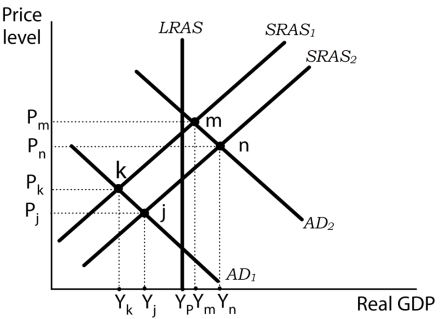Multiple Choice
Use the following to answer questions .
Exhibit: Aggregate Demand and Aggregate Supply and the Great Depression 
-(Exhibit: Aggregate Demand and Aggregate Supply and the Great Depression) Suppose the U.S. economy is at point j. With the onset of World War II, expansionary fiscal policies forced by the war pushed into an inflationary gap. Which of the following best illustrates this event?
A) expansionary fiscal policies shifted the aggregate demand curve, creating an inflationary gap equal to (Yn - YP) .
B) expansionary fiscal policies shifted the aggregate demand curve, creating an inflationary gap equal to (Ym - YP) .
C) expansionary fiscal policies shifted the aggregate demand curve, creating an inflationary gap equal to (Ym - Yj) .
D) expansionary fiscal policies shifted the aggregate demand curve, creating an inflationary gap equal to (Yn - Yj) .
Correct Answer:

Verified
Correct Answer:
Verified
Q31: Suppose the economy experiences a recessionary gap.
Q32: Monetarists conclude that the primary determinant of
Q33: Use the following to answer questions .<br>Exhibit:
Q34: Monetarists contend that a consistent relationship exists
Q35: Which component of aggregate demand plunged sharply
Q37: While Keynes argued that the Great Depression
Q38: In the U.S., the Great Recession was
Q39: In the 1970s, the U.S. economy saw
Q40: During the 1960s, Keynesian economic policies led
Q41: During the 1970s when the U.S. experienced